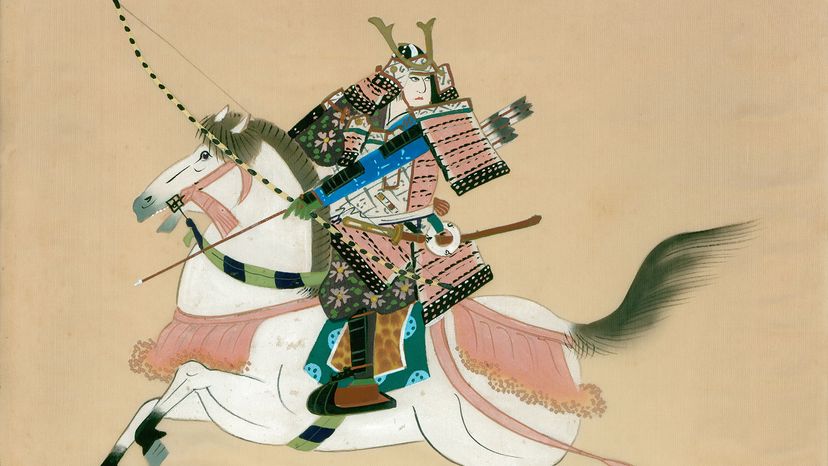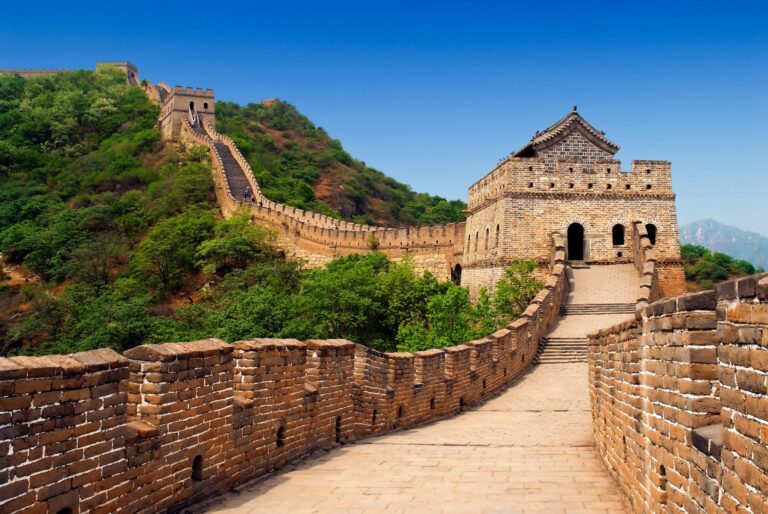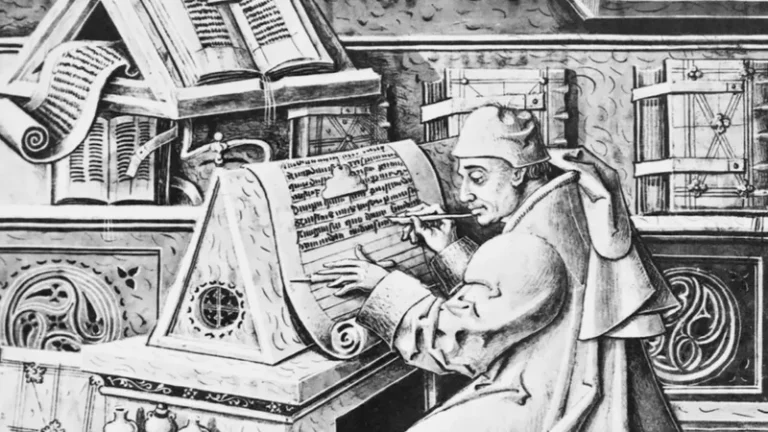Delve into the enigmatic realm of Feudal Japan, an epoch teeming with honor-bound samurai, imposing shoguns, and intricate honor codes that dictated every facet of ancient Japanese society. This comprehensive guide unravels the mysteries surrounding this historical period, shedding light on the rich tapestry of cultural, societal, and political intricacies that prevailed. Embark on a captivating journey through time and immerse yourself in the hallowed traditions, the stern discipline, and the warrior ethos that defined ancient Japan.
An in-depth exploration of the samurai, the elite warriors of feudal Japan, forms a significant portion of this guide. Their code of Bushido, their weaponry, their training, and their roles in society and politics are all examined meticulously. Through this, the guide offers a glimpse into the samurai’s austere lifestyle and their unwavering dedication to honor and duty, a trait that is still admired and revered today.
Equally intriguing are the shoguns, the military dictators who ruled Japan during this period. Their rise to power, their strategies for maintaining control, and their impact on Japanese society and culture are laid bare in this guide. This guide promises to shed light on their tumultuous reigns, the conflicts they navigated, and the legacy they left behind.
Moreover, the intricate honor codes that pervaded every aspect of life during this time also come under scrutiny. These codes, deeply rooted in societal, moral, and cultural norms, were essential components of the feudal Japanese way of life. By understanding these codes, one gets a deeper insight into the societal structure and values of feudal Japan.
Prepare to be engrossed in the riveting chronicles of feudal Japan, an era marked by honor, valor, and discipline. This comprehensive guide endeavors to unravel the mysteries surrounding this fascinating period in history, providing a treasure trove of information for history aficionados and casual readers alike. 🇯🇵 🏯⚔️
The Samurai: The Military Nobility of Ancient Japan
O Samurai were the esteemed military nobility of ancient Japan, playing a central role in the country’s feudal hierarchy and governance for over a millennium. Their origins trace back as early as the 8th century, when provincial aristocrats began employing mounted warriors to maintain order and defend territory. Over time, these warriors grew in prominence, particularly during the Heian period (794–1185), eventually evolving into a distinct and powerful social class that would dominate Japanese political and military life until the Meiji Restoration in the late 19th century.

The Samurai were more than just soldiers; they were elite retainers, often serving under regional lords known as daimyos. In return for their loyalty and martial service, Samurai were granted land, stipends, or social privileges. As the feudal structure solidified, the Samurai became the backbone of the military government, especially during the Kamakura and Tokugawa shogunates. They were seen not only as warriors but as moral exemplars, embodying values such as discipline, loyalty, and courage.
Their distinctive appearance—marked by elaborate armor, topknots, and the iconic katana sword—became symbols of their identity and status. Samurai were trained from a young age in a wide array of martial skills, including archery, horseback riding, and swordsmanship, as well as strategic thinking and even calligraphy and poetry. This broad education reflected the ideal of the “cultured warrior” who was as refined intellectually as he was skilled in battle.
One of the most defining aspects of the Samurai was their adherence to Bushido, the “Way of the Warrior.” This code of ethics emphasized unwavering loyalty, honor, self-discipline, and the acceptance of death. To dishonor oneself or fail one’s master often meant choosing seppuku—ritual suicide—as a final act of redemption and integrity.
Even after the decline of their political power in the 19th century, the legacy of the Samurai endured. Their ethos continued to influence Japanese culture, literature, cinema, and national identity. Today, the Samurai are remembered not only for their military prowess but also for their deep cultural impact and enduring symbol of Japan’s historical spirit.
The Making of a Samurai
The process of becoming a Samurai was rigorous and started at a young age. Boys were trained in the martial arts, archery, horse riding, and the art of war. Samurai were also educated in the bushido code of conduct, which emphasized virtues such as loyalty, self-discipline, respect, and ethical behavior.
Samurais were expected to be proficient in a variety of combat techniques. Their weapons of choice were the katana (a long sword), wakizashi (a short sword), and the yumi (a longbow). However, their weapon mastery extended beyond this traditional trio.
Role of Samurai in Society
In feudal Japan, the Samurai occupied a vital position within the social and political hierarchy, serving as the military elite and enforcers of the daimyo’s will. Their principal duty was to serve their lord (daimyo) with absolute loyalty and to protect his territory, authority, and honor. This often meant participating in regional skirmishes, clan wars, or defending strategic castles and outposts. Samurai were expected to be constantly prepared for battle and to act as the first line of defense in times of conflict.
Beyond the battlefield, Samurai often took on administrative and judicial roles, helping to govern provinces, oversee tax collection, and enforce law and order. Many acted as stewards of their lord’s estate, managing land and peasants, and ensuring the smooth running of feudal domains. Their elevated status granted them privileges, such as the right to carry swords (daisho) and exemption from certain taxes.
In exchange for their service, Samurai were rewarded with stipends (kokudaka) ou landholdings, though they did not always own the land outright. These rewards were a symbol of trust and recognition, reinforcing the mutual obligation between warrior and lord—a key aspect of the feudal system.
Samurai were expected to embody the ideals of honor, discipline, and self-restraint, acting as moral examples for the rest of society. Their code of Bushido dictated their conduct, influencing not only their actions in war but also their daily lives. Through their loyalty, courage, and sense of duty, Samurai helped maintain the social stability of feudal Japan and became symbols of strength, order, and integrity.
The Shogun: The Military Dictators
While the Samurai played a crucial role in the military and social framework of feudal Japan, it was the Shogun who held the highest military authority in the land. Officially appointed by the Emperor, the Shogun served as the de facto ruler of Japan, wielding actual power while the Emperor remained a symbolic and spiritual figure. The title “Seii Taishogun,” or “Great General Who Subdues the Barbarians,” was originally a temporary military title, but it evolved into a hereditary position that defined centuries of Japanese governance.
:focal(700x527:701x528)/https://tf-cmsv2-smithsonianmag-media.s3.amazonaws.com/filer_public/90/5e/905ea6f0-aeda-48fb-8c42-3fc0eab8deb8/shogun.jpg)
The first to hold this title in a lasting and institutionalized way was Minamoto no Yoritomo, who was appointed in 1192 after emerging victorious in the Genpei War. Yoritomo established the Kamakura Shogunate, marking the beginning of the Shogunate system, which would dominate Japanese politics for nearly 700 years. This era saw the rise of military governments, or bakufu, which operated independently of the imperial court in Kyoto.
Three major Shogunate periods defined feudal Japan: the Kamakura Shogunate (1192–1333), the Ashikaga (or Muromachi) Shogunate (1336–1573), and the Tokugawa Shogunate (1603–1868). Each Shogunate had its own internal dynamics, but all shared the essential feature of centralizing military and political power in the hands of the Shogun.
The Shogun controlled vast territories and had the authority to appoint daimyos, allocate land, and command the loyalty of the Samurai class. While technically subordinate to the Emperor, the Shogun’s power far exceeded that of the imperial court. Under his rule, Japan experienced periods of intense warfare as well as long stretches of peace and cultural flourishing—particularly during the Tokugawa era.
O Shogunate system came to an end with the Meiji Restoration in 1868, which restored imperial rule and ushered in a period of rapid modernization. Nevertheless, the legacy of the Shoguns remains deeply ingrained in Japan’s cultural and historical identity.
The Shogunate System
The Shogunate system was a type of military government. The Shogun had the power to distribute land to his vassals, who in turn owed military service. This system ensured that the Shogun had a large standing army at his disposal. However, this also meant that the Shogun needed to maintain control over his vassals, often leading to power struggles and civil wars.
The Shogun’s Influence on Japanese Culture
O Shogunate period was not only a time of political and military dominance, but also one of remarkable cultural evolution in Japan. Under the rule of successive Shoguns, particularly during the Tokugawa era, Japan experienced relative peace and stability, which allowed the arts and intellectual pursuits to flourish. The Shoguns were active patrons of culture, encouraging the growth of various artistic disciplines that would become defining elements of Japanese identity.
One of the most enduring legacies of this period is the refinement of traditional Japanese arts. The tea ceremony (chanoyu), originally a spiritual practice influenced by Zen Buddhism, became a highly formalized cultural ritual embraced by the Samurai class. It emphasized discipline, harmony, and mindfulness — values aligned with Bushido, the Samurai code.
Another art form that blossomed was ikebana, or flower arranging, which combined aesthetics with meditative simplicity. Both men and women of the warrior class were trained in such arts as a means of cultivating inner balance and elegance.
The Shoguns also promoted literature and theater, particularly Noh, a stylized form of drama that blended music, dance, and poetry to explore themes of honor, loyalty, and the impermanence of life. Later, during the Edo period, Kabuki theater e woodblock printing (ukiyo-e) would captivate broader audiences, reflecting the vibrant urban culture that emerged under Tokugawa rule.
In architecture, the period saw the construction of majestic castles, serene Zen gardens, and elaborate temples, many of which remain cultural treasures today.
Through their patronage and policies, the Shoguns not only preserved Japan’s traditional values but also shaped the nation’s cultural landscape in ways that continue to resonate in modern Japan.
Honor Codes of Ancient Japan
The code of honor in ancient Japan was deeply ingrained in society. The two main codes were bushido, followed by the Samurai, and ninjo, which guided the common people.
Bushido: The Way of the Warrior
Bushido, or “the way of the warrior”, was the Samurai’s code of ethics. It emphasized honor, courage, loyalty, and self-sacrifice. A Samurai was expected to maintain his honor at all costs, even if it meant committing seppuku (ritual suicide) to atone for dishonor.

Ninjo: The Humanitarian Code
Contrasting the warrior code, ninjo was the code of compassion and empathy, followed by the common people. It emphasized kindness, sympathy, and consideration for others. This code often came into conflict with bushido, creating a fascinating dynamic in ancient Japanese society.
A Glimpse into Ancient Japan
To truly understand the complexities of feudal Japan, one must look beyond the Samurai and the Shogun. For instance, the role of women in ancient Japan was multifaceted. Women were often relegated to domestic roles, but some became influential figures. Additionally, the influence of Buddhism and Shintoism on Japanese culture cannot be overlooked.
Role of Women in Feudal Japan
In feudal Japan, women were expected to manage the household and raise children. However, some women became onna-bugeisha, female warriors who were trained in the use of weapons and participated in battles.
Religion in Ancient Japan
Buddhism and Shintoism were the two primary religions in ancient Japan. Both religions played a significant role in shaping Japanese culture, from architecture to literature. For example, Buddhist temples and Shinto shrines were architectural marvels, reflecting the country’s deep spiritual beliefs.
Conclusão
In conclusion, “Unraveling the Mysteries of Feudal Japan: A Comprehensive Guide to the Samurai, Shogun, and Honor Codes of Ancient Japan” provides an enlightening exploration into the intricate socio-political fabric of feudal Japan. This piece, steeped in meticulous research, sheds light on the riveting life of the Samurai and Shogun, while delving into the profound honor codes that governed ancient Japanese society.
The astoundingly vibrant portrayal of Japan’s past stands testament to the nation’s rich cultural heritage and the enduring allure of its ancient traditions. More importantly, it underscores the inherent wisdom in the time-tested principles of honor, duty, and loyalty that were the cornerstones of this bygone era. These invaluable lessons from history hold the potential to guide us even in today’s fast-paced modern world.
By unraveling these mysteries of feudal Japan, we are encouraged to not just appreciate history, but to also learn from it. Through this captivating journey, the guide serves as a vibrant historical tapestry, offering a deeper understanding of Japan’s past, thereby fostering an appreciation for its present and future. It is a must-read for history aficionados, Japanophiles, and anyone seeking insight into one of the world’s most fascinating civilizations.



